Tools for FoodThe Objects that Influence How and What We Eat
Part-gift book, part-design object, part-visual history, part-product design tome, Tools For Food is, as the title suggests, a book that explores the history of our most-loved and intriguing kitchen items. This culinary journey takes us around the globe to explore the utensils that went from primitive necessities to specialised equipment, and, of course, those that reversed this process; diving into the history of these objects uncovers how and what we cook has changed over the centuries.
Divided into chapters by function – store, cut, grind, squeeze and mix – each section will contain 10-20 tools, representing the evolution of how our most significant and necessary kitchen tools came to be, showcasing their origins, right up to the most popularised, iconic or cutting-edge versions of today. Each image will be accompanied with information about this particular version’s origin, as well as fun facts about its relationship between culture and cooking.
Corinne Mynatt
Cooks and kitchen equipment are inevitably drawn together like moths to a flame. Corinne Mynatt has compiled a selection of several hundred tools. Yet as many tools there are, more seem to appear all the time. Different cultures have developed similar tools for different purposes. She looks into their lineages and practicality.
Corinne Mynatt discussed her new book and differentiating between a tool and a gadget. Then she turns the tables and asks a few questions herself.
BooksAboutFood.com(BAF): Well I got to start off by saying I got a bit of a problem with your book in that I want to go get all this stuff that’s in there.
Corinne Mynatt: It’s not comprehensive. I’ll say that I started with about 450 objects and now there’s about 250 in there. And I guess I would say if you want to real comprehensive sort of situation like that and to find out what you really want for your kitchen is James Beard’s books from the 1970s. One is the Cooks Catalog and there’s another one called the International Cooks Catalog. And that was a really amazing resource for me and that has hundreds of objects, but that’s actually really come from the chef’s perspective. I think they acquired something like 10,000 different products to review and they really did it from a chef’s perspective and ‘this is the best’ and this is a ‘super interesting thing you should have and this is super useful thing you should have’. So, if you want to get really busy with that, then go get those two books.
BAF: Well from your perspective, how did this project come about?
Corinne Mynatt: Well, so my background was in art and then design actually. So, I went on to complete a master’s in design in the Netherlands where I started making products, but also doing design research and working on curatorial projects. Then when I moved back to London, I worked at the Royal Institute of British Architects as a curator and then with a small design studio. And then I decided that I wanted to go out on my own, and I was wondering what was going to be my sort of linchpin and launchpad for my future career. And I thought, okay, what do I really love doing? What do I love? Okay, I love design. I love these like sort of strange objects I find in the world and I also love cooking. It’s something that I always have done. I remember cooking for friends and family when I was very young and always kind of planning these sorts of elaborate dinners.
And when I stopped making things with my hands, like as a designer and artist that kind of came to the forefront even more. And so, I thought okay, food and design and what could I do? And I remember these objects that I acquired at flea markets across Europe or wherever in the world and just being kind of intrigued by them and had those sort of richness of information contained within each of these objects about society, culture, technology, industry, form and function. And there wasn’t a resource like this, like this Tools for Food book that kind of looked at these objects from a design perspective but also maybe you could say a sort of anthropological perspective that’s what’s really contained within these objects. And that was the kind of the starting point.
BAF: Well and I guess the other question is, you’d mentioned James Beard’s work. How do you narrow this thing down? Because people who probably would read this book are people that are buying stuff anyway. And how do you edit yourself because this could be a huge volume?
Corinne Mynatt: Of course. Yeah, and that was very tricky. I remember when we first had to make that decision because there’s only 304 pages and I had 450 objects to start with which, already I had edited from my research in the library. There are things that I hadn’t already noted down, but I think that well I made some rules for myself at first. So, no gadgets, even though that can be a difficult word to confine and no electrical appliances. So, that kind of helped exclude those things because it gets a bit complicated when you go into that territory. I wanted these sort of more simple manual tools that really could speak from the craftsman’s point of view or from a culture’s point of view of really meeting a need in this form and function.
And I guess then I divided everything into these chapters, which sort of unfold as a process might in the kitchen. So, there’s 10 chapters and then yeah, had to sort of whittle it down from there. But I suppose also my curatorial background and sort of editing things that make sense together, you’ll see on many of the spreads that there’s like a very clear juxtaposition between two objects, maybe they come from a different place in the world but they’re the same or they have a sort of similar sort of movement like grinding, but they perform different functions. So, I was also looking at those juxtapositions to make a sort of clear story as you go along.
BAF: I certainly get the no electronics. I think that’s great. I could see gadgets being a real gray area though. How do you define a gadget?
Corinne Mynatt: It’s true. And actually there are a couple of gadgets who that have snuck in there, but they don’t look maybe so gadgety because maybe they’re not plastic or they don’t look like the gadgets that we know today, which are these sort of single function objects that are very elaborate and like clearly some sort of out mad invention. But there are a couple of gadgets in there or if you’d like to call them gadgets, one being the garlic press and cherry pitter nutcracker and fish scaler tool, which is one of the original inspirations from the book, which is made of aluminum, it was postwar, but it is very gadgety you could say. And so, there’s some things in there that I couldn’t resist to include that were very important for me.
BAF: I have to say that sounds like a great tool, quite frankly. If I understood you correctly, the things that you were looking for were very hands on that could tell a story of time and place and people.
Corinne Mynatt: Exactly. And one of the things I love about the book, I think I kind of mentioned before is seeing these objects that maybe are the same, but used in a different part of the world for a different purpose. So, the clearest example of that is the mortar and pestle in the book. So, in Italy they’re using it for pesto, in Mexico they’re using it to make different sauces and salsas in Africa and even actually east Asia using large wooden ones to either pound rice to make grain or to pound grain in Africa and South America. So, the same concepts but different materials and different ingredients that give you a different result.
BAF: They don’t call it a mortar and pestle, but there’s also special ones are made for guacamole,from lava rocks you can just grind it up and it’s specifically not a mortar and pestle, has its own name.
Corinne Mynatt:: Yes, molcajete.
BAF: Good. Thank you. Now I can press them next time at the restaurant.
Well it’s funny because I was looking through the book and I realized I was using my flour dredger wrong. I’d been using it for powdered sugar.
Corinne Mynatt: Well, it is the same basically. There is the sugar duster, what’s the name? Not sugar duster. Anyway you know what I mean and the flour dredger. Flour dredger has slightly larger holes.
BAF: So, I’ve got to ask, what does your kitchen look like?
Corinne Mynatt: Well…now that I had to acquire quite a few of these objects for the boat, which I did photograph I do have quite a few objects in my kitchen, but not loads. I’m actually quite a minimalist and I don’t have millions of things. And there is so much that you can do with very basic tools. But what I do love about this book and the fact that I did have to acquire so many of these tools is that it gives an opportunity to learn and to make a new cuisine. So for example, like the pelmeni maker from Russia, sort of Eastern Europe I haven’t used that yet but I’m really looking forward to it. It makes these tiny ear shape dumplings and even here I have opened in front of me the book, the coconut grater to make sambals from Sri Lanka or whatever else you would make with this freshly grated coconut. So, that’s so fun. And for me, this book was also so much about learning, learning about these new tools, learning about other cultures, and then you can learn about new food with them. So, that’s also super fun.
BAF: Was this an unexpected bonus that you didn’t anticipate?
Corinne Mynatt: Yeah, kind of in a way for sure. And the reason why I started this project is because there’s a whole lot of richness within it to expand into other areas. So, watch this space, there’s going to be a lot of other things happening.
BAF: Well, how long did it take to, I don’t want to say ‘sift’ but go through all this?
Corinne Mynatt: Well, overall probably over two years, but really if condensed everything, it would probably have been over a one year period. I started the research when I left my job and I worked on it kind of light touch going into the library and researching and starting to put together proposals for publishers. And then by the time I had my contract, it was about six months worth of writing and then doing all the picture research and then also acquiring the objects to photograph. So, yeah about a year in the end.
BAF: It sounds like it was a lot of fun just to find these things and to go to these markets.
Corinne Mynatt: Absolutely. I mean it was a challenge to find all the things that I wanted, but it was fun. Yeah, I spent a lot of time in France in the summer when I was acquiring the objects and yeah, that was fun to go to the flea markets there and find what I was looking for.
BAF: So, it’s a bit of a chicken and the egg situation that you would travel around and you would find something or did you have an idea and include? Or do you have an idea I want X, Y, and Z, I’ll go find those?
Corinne Mynatt: It was a bit of both. There were things that I found on my travels that I thought, oh, what’s this? And I definitely have to include this now. And yeah, I think it was mostly the latter. Then I knew what I wanted to get and then I had to go find it either by well seeing how expensive it was if I could afford to acquire it in photograph or looking for picture research. But I think there probably were some things that I couldn’t include in the end because I just wasn’t able to find it or, wasn’t able to find a picture that was free or that we could afford.
BAF: Well, can I ask is there one or two things you really feel you missed out and you would love to have included? Or you don’t have to answer that if you don’t want to…
Corinne Mynatt: Yeah. I have a whole slide deck of the things that were omitted, but I can’t remember what’s in there now. I just know that I’m going to look back on that deck when I make an expanded volume and I’m allowed to have whatever I want in it.
BAF: Good. Good to know. I’ll be rooting for you. The one gadget that I have to get confess I didn’t see it in the book, I don’t know if I missed it. Was that famous I think it was Philippe Starck, the citrus press.
Corinne Mynatt: Yes.
BAF: And that’s always held up as the ultimate design and kitchen. And to me, I thought that looks kind of unwieldy.
Corinne Mynatt: Exactly. Yeah, that definitely is in the book. And it is one of the contentious design objects of all time because it is so much about form and not about function. Now I’ve never used it, but it doesn’t seem like that it functions as well as you might want it to. And he actually said himself, Philippe Starck, that it’s not an object to be used but to be talked about and that’s really true. But what I like about where that object sits in the book is that it kind of comes in this whole lemon section, which if you follow kind of tells the interesting story about why lemons were first used and then for scurvy and then how they were used around the world and the different kinds of objects that were used to juice them. So, actually it was an interesting story.
BAF: I’ve always been intrigued by that piece, tempted to use it but I don’t know how much these things they cost. I wouldn’t even know where to find one. I think I may have seen one in a museum or something if that’s possible.
Corinne Mynatt: Yeah. Absolutely. Yeah, it’s in many design collections around the world I think.
BAF: As I said, just very unwieldy and again, it’s form before function.
Corinne Mynatt: Yes.
BAF: So, what’s happened to all these wonderful objects? Have you been able to hold onto them or have you set up a stall in the flea market somewhere or have you…
Corinne Mynatt: Well, yeah funny you say that. Yes, I did sell a few things on which now a few people have famous objects from my book Tools For Foods. But there are a number of them that I have held onto for now, but I do look forward to cooking with them when I am back in London at some point next year.
BAF: Well is there anything you held onto that you would never have thought you would have in your kitchen and that you still question but you just love the object and you would like to use it at some point?
Corinne Mynatt: There is one thing that surprised me a bit, which was a orange peeler. It’s this little object in the book that’s made of plastic and it’s circular and you put it on your finger and it has a sort of like shark tooth that sticks out that you use to peel an orange, you just kind of score it. And I was intrigued by the object when I found it, which I found in my research actually just because it’s a very strange and minimal looking object and I was just really intrigued by. If you looked at it, you wouldn’t really know what it was for. And it is kind of a gadget because it is like a little plastic thing that you have in your kitchen. But actually in the end it’s quite useful and I enjoy using it because it can be really annoying to peel citrus sometimes and that object surprised me.
BAF: Actually, you know what? I don’t have one, but I do know that object. I’ve used them. One I use the sharks is on the bottom. So, I’m glad that’s in there, it’s a wonderful little object. So, what’s next for you?
Corinne Mynatt: Well I will hope that there will be a volume two, but that’s not confirmed yet. It’s just the beginning, so we have to see about that. I’m actually going to be traveling over the next year and working remotely. So, I’m hoping to make connections with people in the places I go. I’d love to make some dinner events with the tools because you can tell such interesting stories about different cultures and get really involved in cuisines. I’d love to develop podcast material and TV. I actually received a research grant to travel to Japan for the project actually in 2020 and of course the trip has been delayed and delayed and delayed. So, I’m hoping that next year we’ll be able to go and finally connect with crafts people there making specific tools for food in Japan because there’s so many exquisite objects, many of which that are in the book. And yeah, just keeping on developing this content and taking it where I can.
BAF: Well it sounds great. Certainly I know the Japanese have just a beautiful way to their craftsmanship. That sounds fascinating. I’m envious about that one. That sounds great. Well maybe I can just backtrack a bit. Were you a cook in the kitchen? Were you a deaf hand or did you like to cook?
Corinne Mynatt: Yeah, it’s funny. I have this memory of when I was 18 and hosting a dinner party for my friends, which I find unusual. I don’t know. It seems quite young to be doing that, but maybe not so. But yeah, I’ve always loved to cook and I’ve always loved to cook for other people. I’ve always loved to discover different ingredients. I remember when I moved to New York and first going to Chinatown and being like, oh my gosh, what are all of these things? And I wanted to learn so much about them.
And in the most recent years I’ve made quite elaborate dinner parties, sort of quarterly for friends that are kind of 10 course affairs. I’m very influenced by my French family and sort of young memories that I had going to Paris and having these very long lunches where there’s apéritif, the entree, the main, then you have the salad, then you have the cheese, then you have dessert, then you have fruit, then you have the digestif and on and on. And I kind of like this order and just having lots of courses is really fun and it makes a fun opportunity to experiment with different things.
BAF: So, it’s nice everything falls into place it seems. I think I covered everything I wanted to ask. I always like to ask people, is there anything you want to mention that we may have missed or skipped over?
Corinne Mynatt: No, I think that’s been really good. But what’s your kitchen like…?
Booksaboutfood.com © 2021


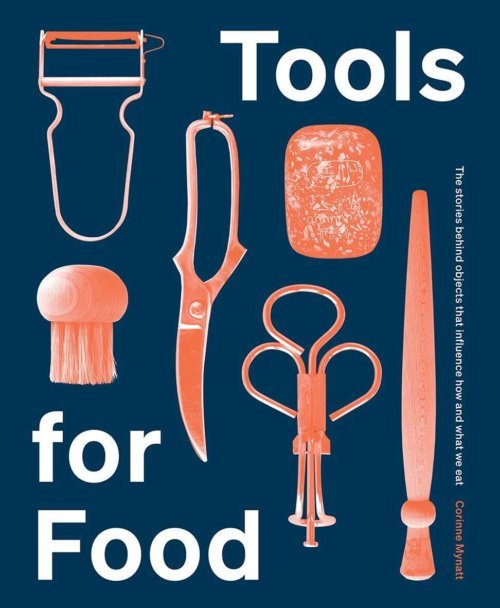


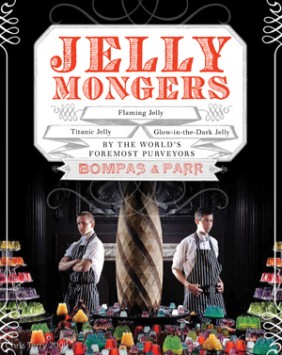
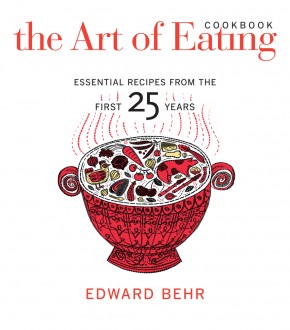
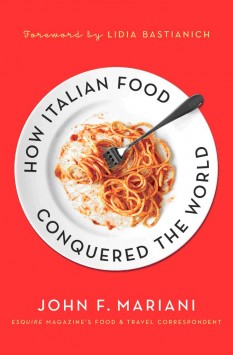
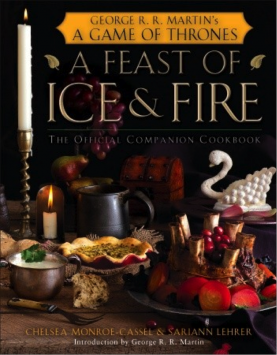
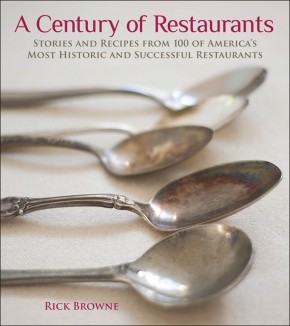
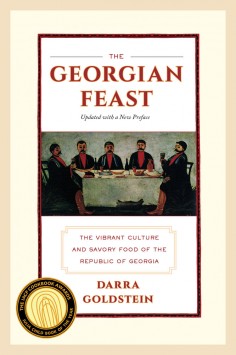
Leave a Reply